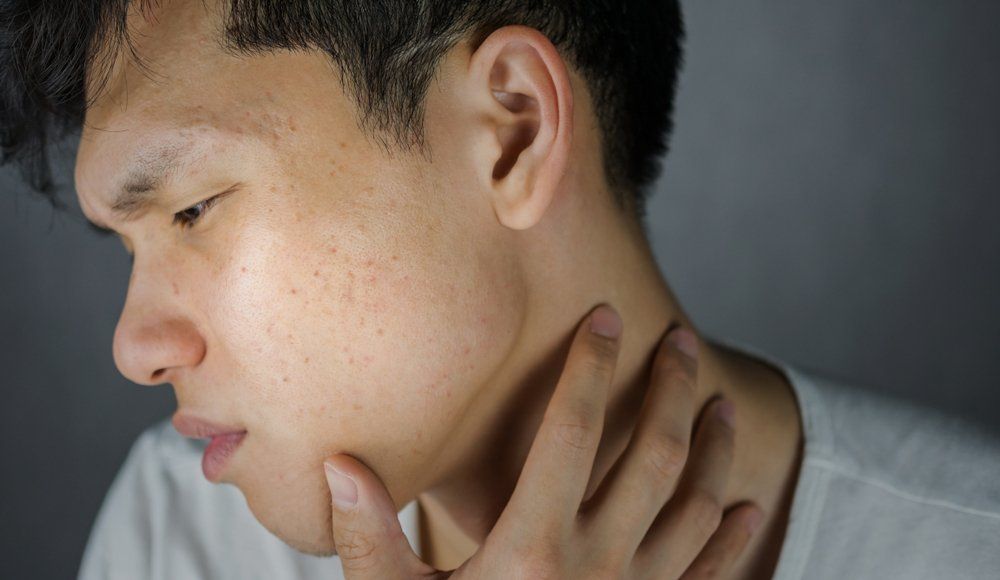- Acne
- Actinic Keratosis
- Aesthetics
- Alopecia
- Atopic Dermatitis
- Buy-and-Bill
- COVID-19
- Case-Based Roundtable
- Chronic Hand Eczema
- Chronic Spontaneous Urticaria
- Drug Watch
- Eczema
- General Dermatology
- Hidradenitis Suppurativa
- Melasma
- NP and PA
- Pediatric Dermatology
- Pigmentary Disorders
- Practice Management
- Precision Medicine and Biologics
- Prurigo Nodularis
- Psoriasis
- Psoriatic Arthritis
- Rare Disease
- Rosacea
- Skin Cancer
- Vitiligo
- Wound Care
Article
How stress impacts chronic skin conditions
Author(s):
Recognizing the role of stress in skin disease can allow dermatologists to empower their patients to pursue any and all avenues for managing their disease.
Not all patients with a flare will have a history of stress, but why not ask? (paikong - stock.adobe.com)

Psychophysiological disorders are true dermatologic diseases that are exacerbated by emotional stressors. It is not to say that because someone is stressed emotionally or physically that they will develop a disease, but that a stressor that disrupts the homeostatic balance of the patient can exacerbate a chronic condition.
Atopic dermatitis, acne, rosacea, herpes simplex, psoriasis and hyperhidrosis are all examples of conditions that patients report worsen when they are under stress. When a patient presents with a flare, it is not uncommon that, when prompted, the patient will report some stressor in their everyday life.
RELATED: Psychodermatology: Where The Skin And Mind Meet
The hypothalamic-pituitary-adrenal (HPA) axis and the sympathetic nervous system are among the two major neural pathways that are activated by stressors. There is a multitude of chemical signals released in response to stress. For this article, I am going to give a basic version of these complex pathways to illustrate the take home point that the mind impacts the body.
The hypothalamus is triggered by neurosensory signals to release corticotropin-releasing hormone (CRH) and vasopressin. CRH then goes on to activate the HPA axis, which leads to the release of adrenocorticotropin hormone (ACTH), which then induces the adrenal cortex to secrete glucocorticoids along with catecholamines.
CRH also releases norepinephrine and epinephrine from the adrenal medulla. All of these mediators have dramatic effects on the immune system.1 New literature and novel treatments with off-label use of naltrexone, address the role of psychological stress and increased CNS levels of opioid neuropeptides, which not only cause pruritus but aggravate certain dermatological conditions with both psychosomatic and immunological components, such as psoriasis, chronic idiopatic urticaria and atopic dermatitis.2 (See Figure 1.)
Another piece to this complex puzzle is the role of neuropeptides, such as calcitonin gene-related peptide (CGRP), vasoactive intestinal peptide (VIP) and substance P. These mediators are released from nerve terminals present in the cutaneous sensory nerves. The complex interplay between these mediators on the immune system, specifically the activation of mast cells and T- lymphocytes, exacerbate many inflammatory skin conditions.2
Patients like this are easy to recognize because they are often in your office for a flare. Not all patients with a flare will have a history of stress, but why not ask?
Asking about a patient’s life fosters a better patient-doctor relationship and can help the dermatologist shake out why they are having an increase in severity or frequency of flares. For a psychophysiologic disorder, I believe that motivational interviewing techniques are useful in these situations. I often openly recommend the patient see a psychiatrist if they are going through major life changes, such as a death in the family, terminal illness, loss of a job or a divorce.
RELATED: The psychosocial burden of acne
The most important role for the dermatologist is to recognize the role of stress in their disease, validate the patient’s feelings and remove the stigma around psychotherapy and asking for help during hardship.
I do not believe the dermatologist has a major role outside of the skin disease, unless, of course, they feel comfortable doing so. As dermatologists, we do have a major role in empowering our patients to pursue any and all avenues for managing their disease, especially if they would benefit from psychotherapy.
In this subset of patients, I believe they have insight into the role of their stress on their skin condition and are motivated to seek help outside of their dermatologist. Assuming the dermatologist has a patient with no contraindications and the physician is comfortable prescribing medications, hydroxyzine 25 mg - 50 mg helps with itch and low level anxiety. Doxepin starting at 10 mg is another option in addition to standard of care for the skin disease you are treating.
Understanding the complex interplay between the mind and the skin is important for the dermatologist and the patient to recognize so optimal control of the disease can be reached. Â
References:
1. Harth, W., Gieler, U., Kusnir, D., Tausk, F.A.(2009). Clinical Management in Psychodermatology. New York City: Springer.
2. Koo, J., Lee, C.S. (Eds.) (2003). Psychocutaneous Medicine. New York: Marcel Dekker, Inc.
Newsletter
Like what you’re reading? Subscribe to Dermatology Times for weekly updates on therapies, innovations, and real-world practice tips.











